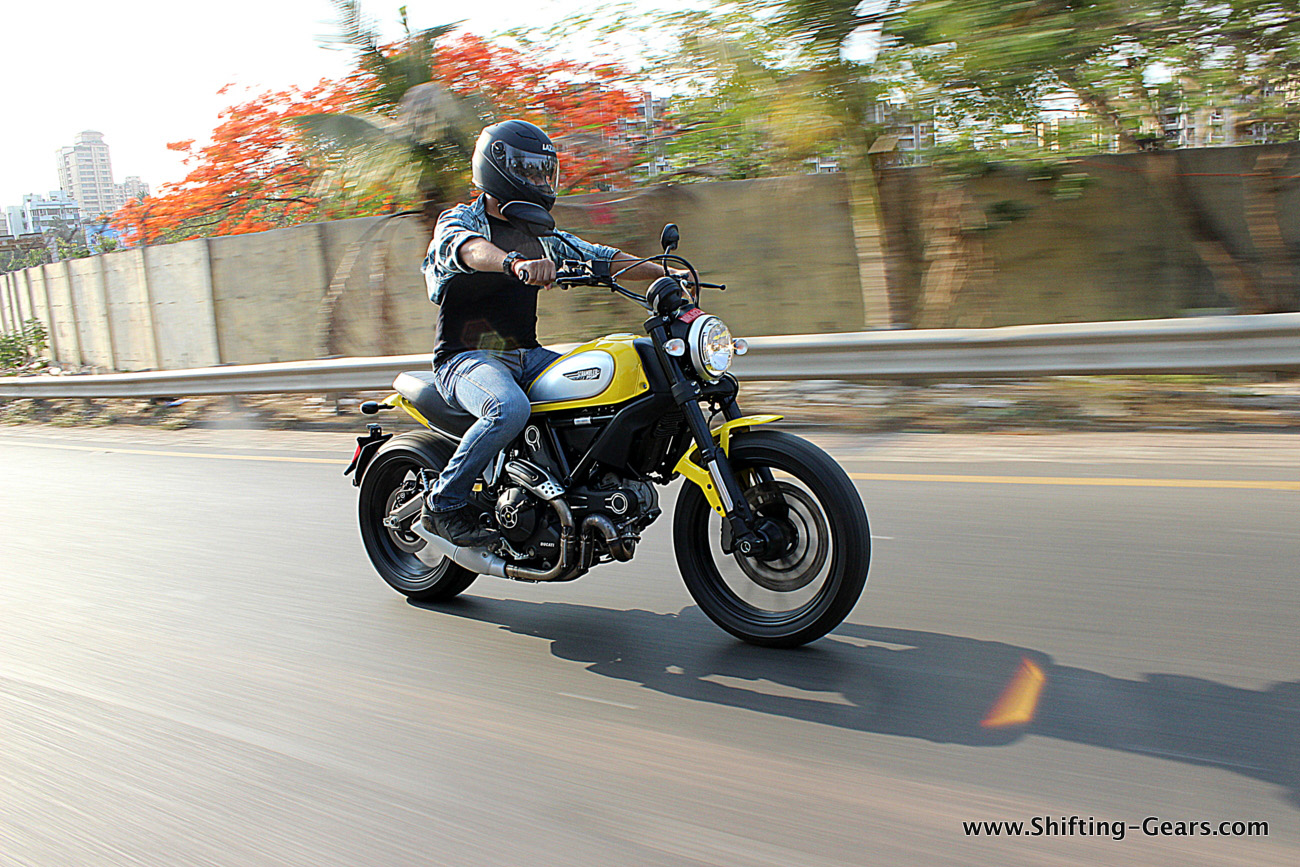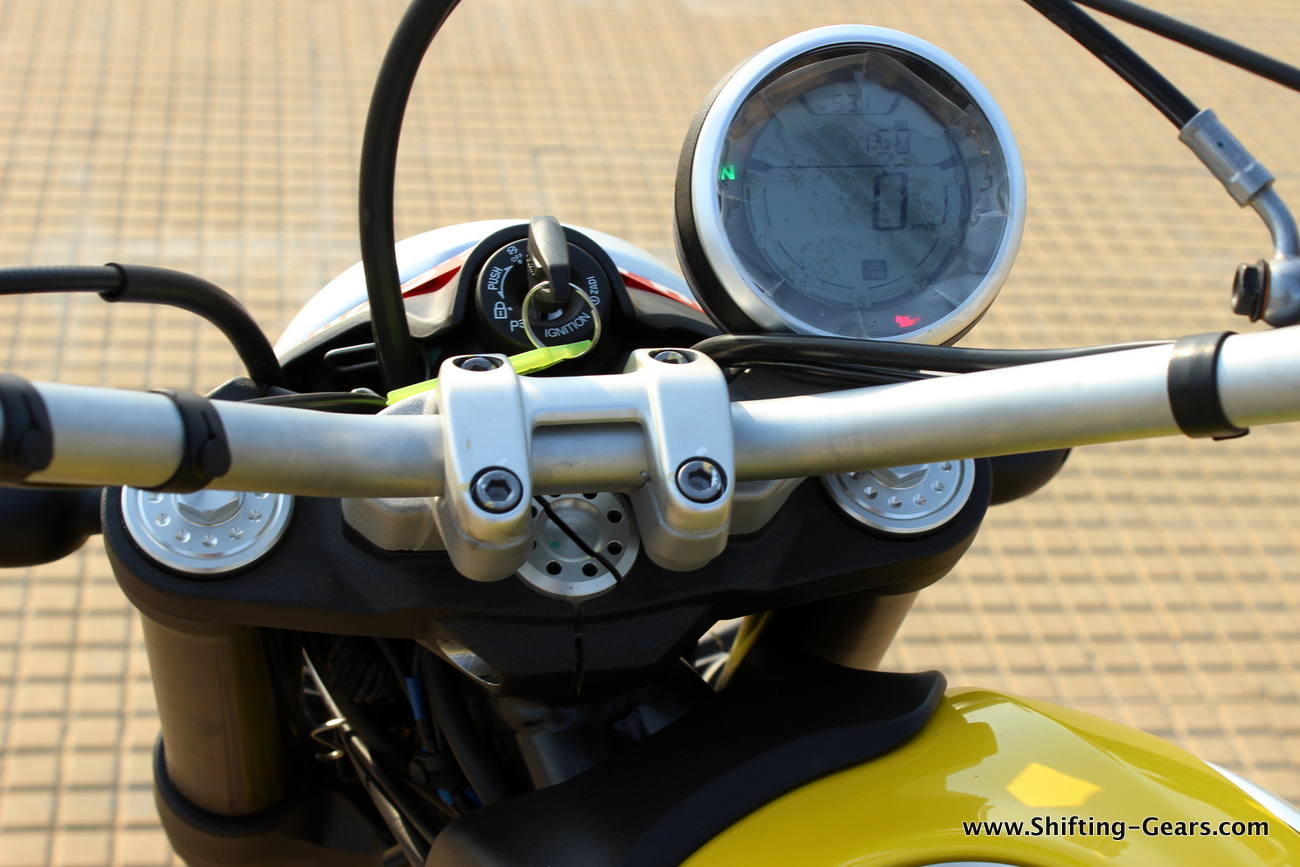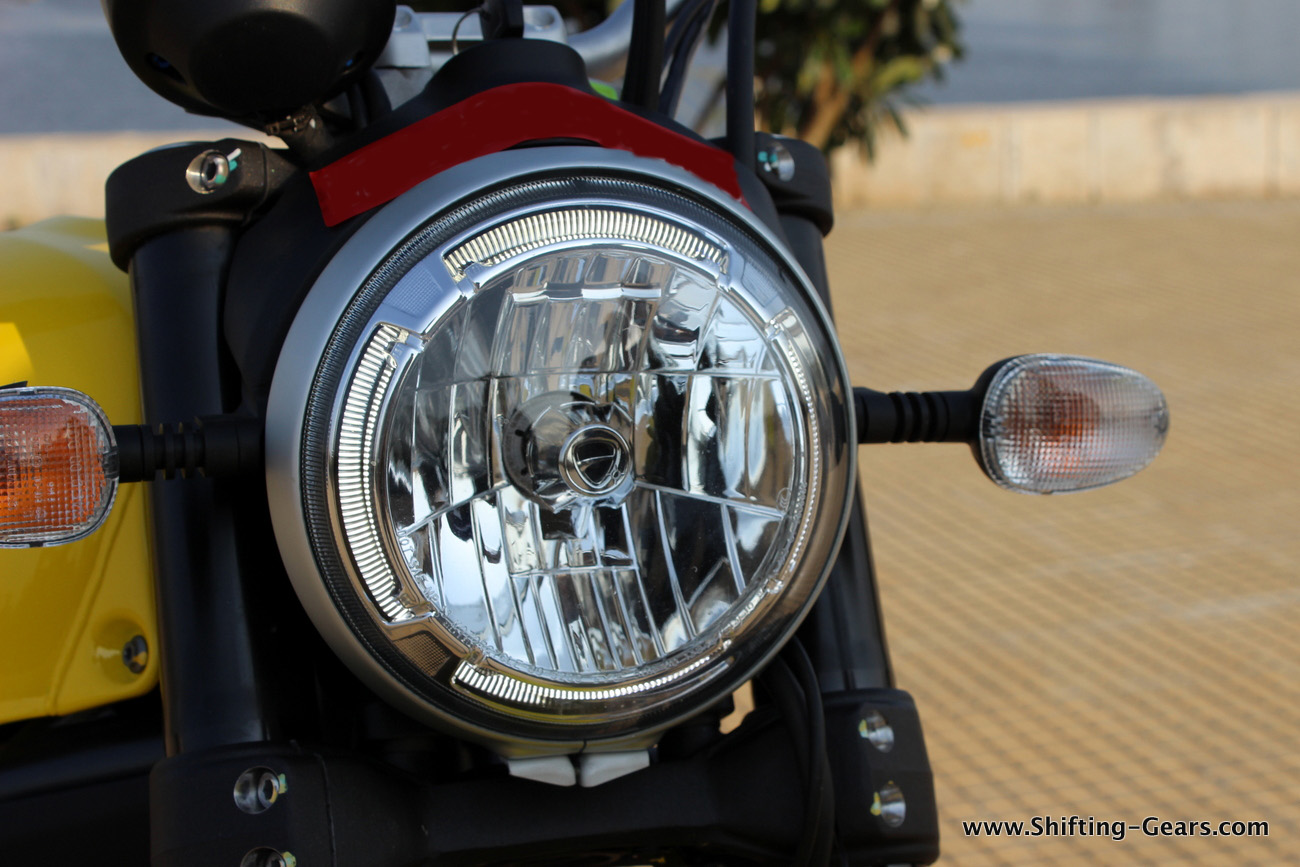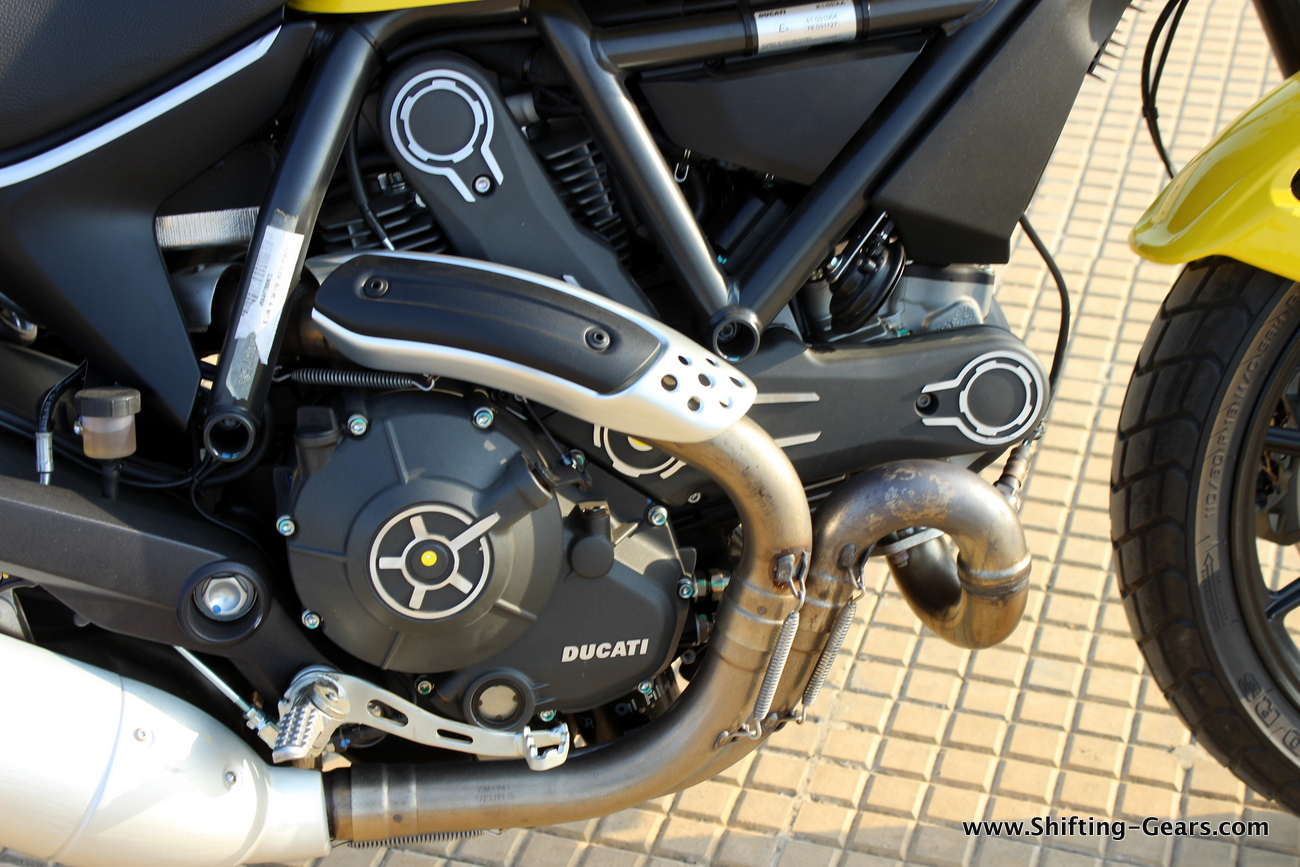While the Ducati Monster has been the most affordable sportsbike from the Italian manufacturer in India, there is a new product slotting in at an even more affordable price tag. It is the DUCATI SCRAMBLER.
Ducati Motor Holding S.p.A. is an Italian company that designs and manufactures motorcycles. Headquartered in Bologna, Italy, Ducati is owned by German automotive manufacturer Audi through its Italian subsidiary Lamborghini, which is all owned by the Volkswagen Group. Ducati has set up showrooms Delhi, Gurgaon & Mumbai at the moment and is working on more locations across the country. What has earned brownie points for the brand is that Ducati will offer service support to existing customers in India. Ducati has brought almost the entire range to the Indian showrooms, in CBU guise. Prices range from around Rs. 6.5 lakh all the way up to Rs. 47 lakh.
The Scrambler is entering the Indian marketplace for the first time, however, that is not the case globally. Ducati used to manufacture the Scrambler motorcycle for the American market from 1962 till 1974. With the Scrambler coming back to life in 2015, there is a lot of nostalgia around the motorcycle. The Scrambler has always been a derivative of other road going models, and it’s the same case with the latest model as well. It shares the engine with the more expensive Monster, but in a different state of tune.
Bookings for the Ducati Scrambler are now open, and deliveries are expected to commence from the end of this month.
Expected Pricing: (Ex-showroom Delhi)
- Ducati Scrambler Icon red: Rs 6.38 lakh
- Ducati Scrambler Icon yellow: Rs 6.48 lakh
- Ducati Scrambler Urban Enduro : Rs 7.54 lakh
- Ducati Scrambler Classic: Rs 7.54 lakh
- Ducati Scrambler Full Throttle: Rs 7.54 lakh
So is the Ducati Scrambler a worthy product to attract customers at the lower end? Can the Scrambler with its old-school, retro-classic & bare minimum looks manage to appeal to the masses & classes? We took the latest kid on the block, the Scrambler Icon for a quick spin around Mumbai to find out…
Styling:
Well, the name suggests it all. Scramblers are defined as motorcycles built for riding around rough or hilly terrain, and the Ducati Scrambler looks the part. At one glance, if not love at first sight, the Scrambler is definitely worthy of paying some extra attention. Yes, there is nothing extra-ordinary about it, it looks like any other ordinary motorcycle. But Ducati has done an impressive job of packaging the best of 2015 standards in a design which can still manage to appeal to those from the golden era of motorcycling.
Walk towards the Scrambler and it is clearly visible that the bike is going to be easy to ride. The bike measures up to 2,165 mm in length, 845mm in width, 1,150mm in height & has a wheelbase of 1,445mm. The seat height of 790mm is visibly easy to access for riders of even shorter height.
Let’s start with the front, the Scrambler get’s not too much to show, with just a headlamp & a small front mud guard. The headlamp is the usual round shaped unit. However, to express & emphasize that it is in line with 2015 standards, the Scrambler features an LED light guide (DRL) as a ring within the lens. It looks like it is split in 4 parts, but these 4 breaking points are actually the mounts holding on to this unit. Yes, LEDs are a little flashy, but here, it adds the right amount of modernity to an otherwise retro looking motorcycle. Turn indicators get clear lens, and amber illumination. We would have preferred an amber lens as well though. Below, you have a very short body coloured mud guard sitting on top on knobby tyres, which does justice to the Scrambler nameplate. Suspension duty is performed by 41mm upside-down Kayaba forks which are finished in black. They even get fork protectors. The Icon & Full Throttle versions of the Scrambler feature 18″ 10-spoke alloy wheels while the Urban Enduro & Classic versions feature spoked rims. Front brake is a 330mm disc with radial 4-piston calliper & ABS as standard. Rear view mirrors are conventionally mounted on the wide handlebar & are black units with a subtle crease line.
Come to the side, and you’ll be really appreciate how Ducati has retained a design element which is almost 5 decades old. The Scrambler gets a tear drop steel fuel tank with aluminium tank covers on the either side. This combination adds a lot of character to the motorcycle. Also, since there are not too many body panels around it, it adds a nice touch of detailing. Apart from this, the tank looks pretty ordinary and sports a silver fuel filler cap. There’s additional crease lines on top of the fuel tank, behind the fuel filler cap. The Ducati Scrambler Icon is available in yellow & red body colours, and from what we’ve seen online, we would prefer the yellow over the red. Next comes the tightly packaged engine bay. The L-twin motor on the Scrambler features aluminium belt covers finished in black & even the engine is finished in black with a hint of machine finish. The tubular trellis frame is also exposed, and is painted in black as well. Even the engine case is machine finished and gets black paint (LHS). The Scrambler features a 2×1 exhaust system which makes use of aluminium heat covers & a short midship exhaust with a silver finished stainless steel end can. The o2 sensor in the exhaust is clearly visible. Rear suspension is also cross mounted and is a single Kayaba shock absorber with preload adjustment. This rear suspension is mounted on the LHS & is not even visible from the RHS. The seat is a single piece & almost flat / mildly contoured unit with acceptable space for two, some would surely find it a bit tight though. There’s an aluminium stripe running under the seat as well to add some more funk to the design. And hey, there’s a a USB port under the seat as well, so you can run all day on the Scrambler without worrying about your phone battery running out.
Come to the back, and the tail lamp is very uniquely positioned. It actually sits under the pillion seat and on top of the body coloured rear mudguard. The tail lamp sports a U-shaped LED element and looks good. There’s Ducati badging on the seat as well, shouting out loud when seen from behind. Rear swingarm holds on to a 17″ 10-spoke black alloy wheel. Rear brake is a 245mm disc with 1-piston floating calliper & ABS as standard. The rear mudguard is very short, and ends with a short protrusion after the tail lamp. The number plate mount is a separate unit mounted on the rear swingarm and travels to sit on top of the rear tyre, with a small reflector as well. Turn indicators however are mounted on the top mudguard itself. Pillion also gets grab rails under the seat, which are not really visible at all times.
So in the looks department, the Scrambler considering the price point, and the classic design being carried forward, easily scores high numbers (may be full) in our books. It might sound like we’re praising it too much, but then, it just felt that good. User preferences differ, still, the Scrambler would please many & offend none with carrying the 1962 nostalgia with ease.
Instrumentation & ergonomics:
Instrumentation department is a very short thing to describe. The Scrambler makes use of a single pot instrument cluster which is offset to the RHS on the handlebar. This single pot instrument cluster however is an LCD unit & even gets interchangeable aluminium covers. Instrument cluster is full digital & the revv counter works anti-clockwise, from the bottom end of the unit. Data displayed includes time, odometer, two trip meters, speed, side stand indicator, temperature & a couple of tell tale lights. The anti-clockwise revv counter is however a bit hard to use, since it takes a lot of time getting used to it.
Instrument cluster is conventionally mounted on a silver, wide handlebar. By wide, we mean that it is wider than the standard Royal Enfield Bullet handles, but not as wide as the aftermarket units for example. What looks odd is that Ducati makes use of tie-clips to hold on wiring around the handlebar. Considering the retro styling, it would have been OK if the wiring was a bit more messy or exposed. This might have been done to keep things a bit easier to maintain though. To the RHS of the handlebar, you have the usual, only an engine starting switch & a kill switch. To the left, you get the usual controls along with a button to toggle the MID. Brake levers are not forged & are painted in black. They do not get adjustment either. The riding grips however are unique & have extra protruding groves where your fingers would be placed. This will ensure the rider does not lose grip while riding over rough terrain. Rear view mirrors offer decent viewing range.
790mm of seat height is very comfortable, and shorter riders especially will be very happy. The Ducati Scrambler is very easy to get on to. And since the seat is flat, you can comfortably move your legs around. Seating position on the Scrambler is upright. Handlebar is wide, and hence, it would be a bit different for riders. It is not uncomfortable, but will take some time getting used to when riding in city traffic, etc. Foot pegs are mildly rear-set and have a decent balance between sporty & comfort. Riders looking at outright comfort wouldn’t complaint about the riding position being sporty due to this. Overall, for the rider, things are pretty acceptable.
For the pillion, the seat is flat and has decent room. But if there are two heavy occupants on the Scrambler, things would be a little tight. Also, with the pillion seat being flat & the grab rails placed at the bottom, initially the pillion would opt for holding on to the rider unless they are informed about the hidden grab rails under the seat. Seat compound is medium, but towards the firmer side. Long rides might leave you with a sore saddle, but then, it depends how long.
Engine, performance & handling:
The Ducati Scrambler is powered by a L-Twin, Desmodromic distribution, 2 valves per cylinder, air-cooled petrol engine which is shared with the Monster range of motorcycles. However, this 803cc unit is in a different state of tune. The Scrambler belts out 75 BHP of power @ 8,250 RPM & 68 Nm of torque @ 5,750 RPM matched to a 6-speed gearbox. Fuel is delivered with the help of 50mm throttle bodies & fuel injection.
Fire up the Scrambler & the L-Twin sounds like… well, a TWIN! Exhaust note is choppy, as you would expect from a twin-cylinder motorcycle. NVH levels are acceptable, but we would say at idle, the Harley-Davidson Street 750 at a lesser price tag has better engine harshness & vibrations. On the Scrambler, it is more pronounced, not unnerving though. Vibrations on the handlebar & foot pegs are decently contained.
Slot it in first, and the Scrambler has ample torque available lower down the revv range to get going without any throttle input. It is very city friendly, and riding in the first or second gears at low speeds is not a problem. However, the twin feels a bit nervous if you slow down to less than 50 kmph in top gear. Engine lugging is something we do not recommend, but the Scrambler is very forgiving and you can ride in second or third gears with speeds dropping even below 20 kmph & getting away with it with minimum slipping of clutch. Cable operated clutch is light and does not require too much effort. Adjustable levers however would have been a nice touch since some might find the levers to be a bit of a stretch. While riding in the usual city traffic on Mumbai streets, even on a hot sunny day, the heat management was very good. It is an air-cooled engine, but heat felt on your legs is not troublesome. We rode the bike for a collective 1 hour in the afternoon & in the city as well as on the highway, and heat was never a problem for us. So, at least for the city, the Scrambler should keep riders happy.
Out in the open, wring the throttle and the Scrambler has a very good mid-range punch. The engine is retuned compared to the Monster, and pulls clean well over 9,000 RPM. Power & torque is spread widely throughout the revv range, and there’s enough punch by entry-level standards. While starting from 0 kmph, there is that unavoidable twin-cylinder vibration, but it smoothens out when the revvs climb. Clocking speeds over triple digits is easy, and the bike is comfortable maintaining high speeds. Power delivery however is not really linear. If you wring the throttle hard, the front end loosens a fair bit and the bike is very eager to lift the front end. As is the case with non-faired motorcycles, wind blast is unavoidable; but that’s the loved part on Scrambler’s we guess. High speed stability is good, and the bike maintains straight line with modest crosswinds.
The Kayaba suspension matched to the trellis frame offer a very well suited riding dynamics for our Indian streets. It’s the right balance between soft & sporty to tackle broken Indian roads. The bike soaks up bumps with ease and one would not really feel too much of a jerk on his back. The bike has a wet weight of 186 kg, still, it feels very light. The turn-ins are very quick and the Scrambler is very easy to flick around. We were surprised how light it felt, almost as light as a 200cc naked. If you want to have some more fun, may be you should look at the Scrambler Full Throttle version which gets lower handlebars which would take enthusiastic riding a notch above. In the premium segment, and at this price point, we must mention that the Ducati Scrambler is best suited for our Indian roads.
The knobby tyres offered by Pirelli provide very good performance. While we did not get a chance to try their off-road capabilities, they stuck to the tarmac well. Even with the knobby pattern, it managed to attack corners without the rider losing confidence. Tyre noise also is not too much. Considering Indian streets have a mix of flat tarmac, potholes, gravel & much more; these tyres are should do the job well. Braking performance comes with the help of disc brakes at the front & back coupled with ABS as a standard equipment. Brake bite is acceptable and ABS ensures you stop in a straight line without locking up. We tried hard braking after a short blast, and the ABS didn’t kickin.
While you might have noticed, that the Scrambler has left us really impressed, we must mention, it is really a very versatile motorcycle. At under Rs. 8 lakh on-road, you will get a comfortable city commuter, a capable soft-roader & enough punch even for the highways. The motorcycle lives up to the expectations we had, in the looks as well as performance department. It actually performed a bit better than expected with its complaint riding abilities. The all-round ability of the Scrambler is just perfect for those looking for an entry in the higher-capacity motorcycle segment. It’s a simple motorcycle, but an attractive one at that. And trust us when we say this; it is an insanely fun, easy & liveable motorcycle for enthusiasts as well as newbie riders.











